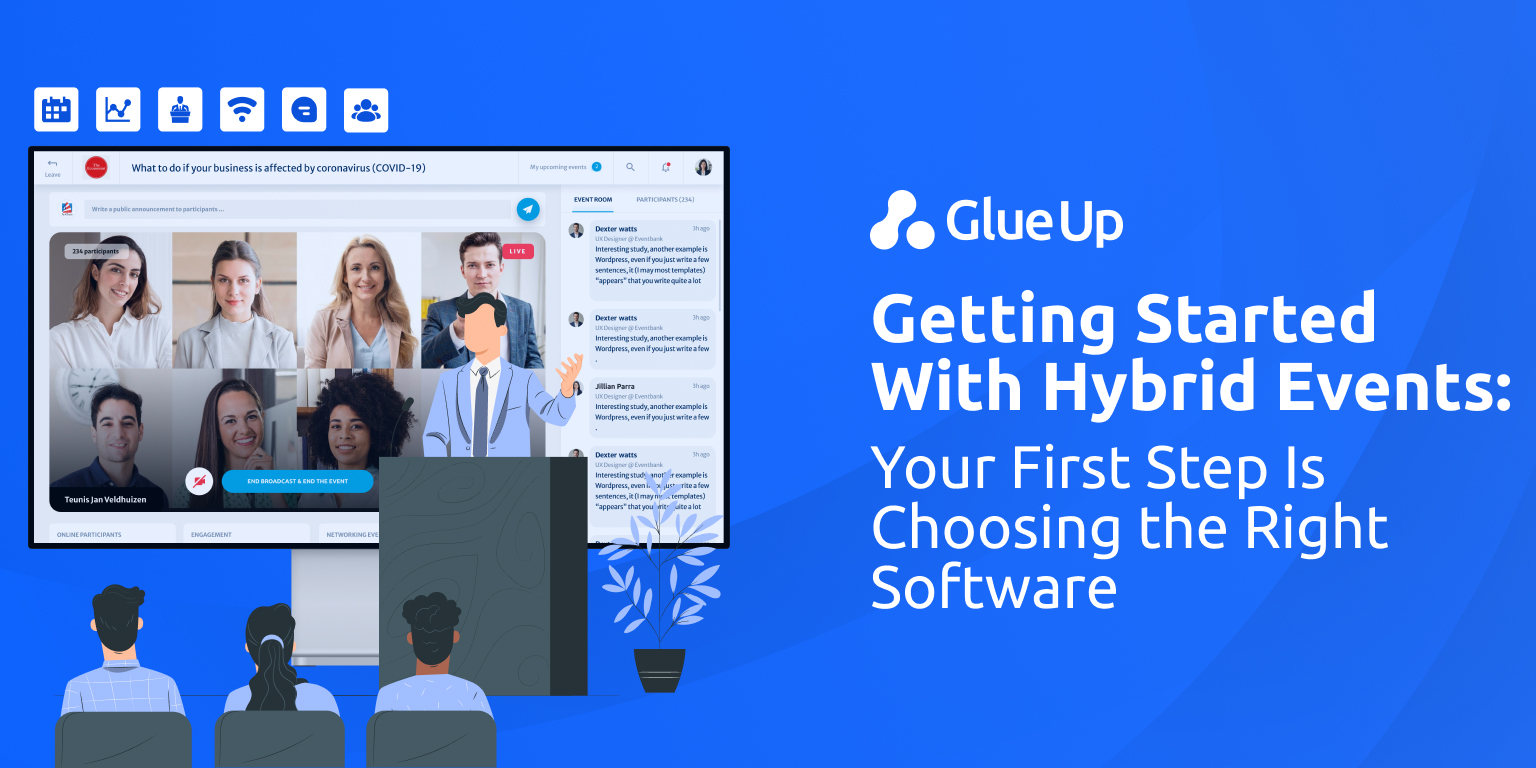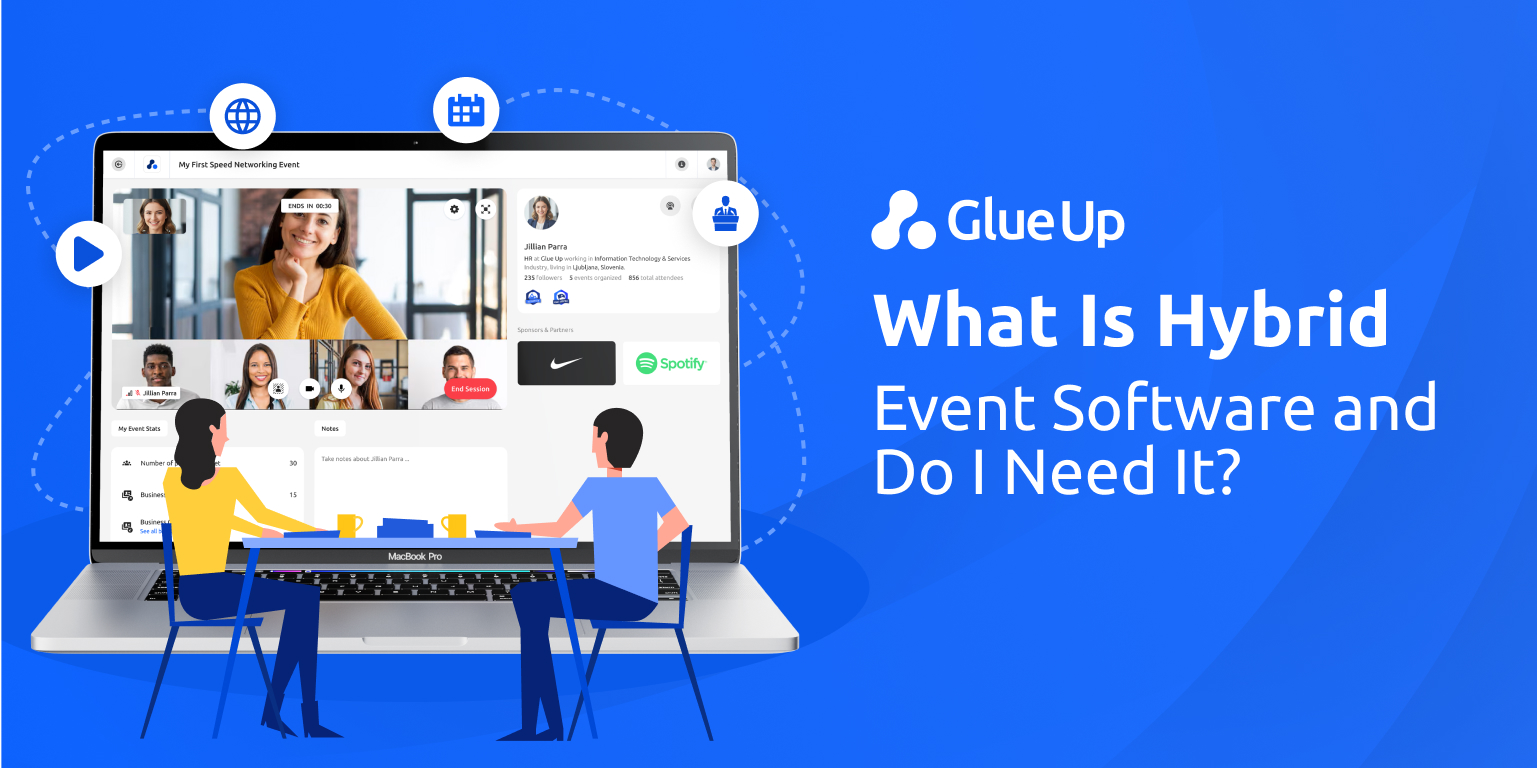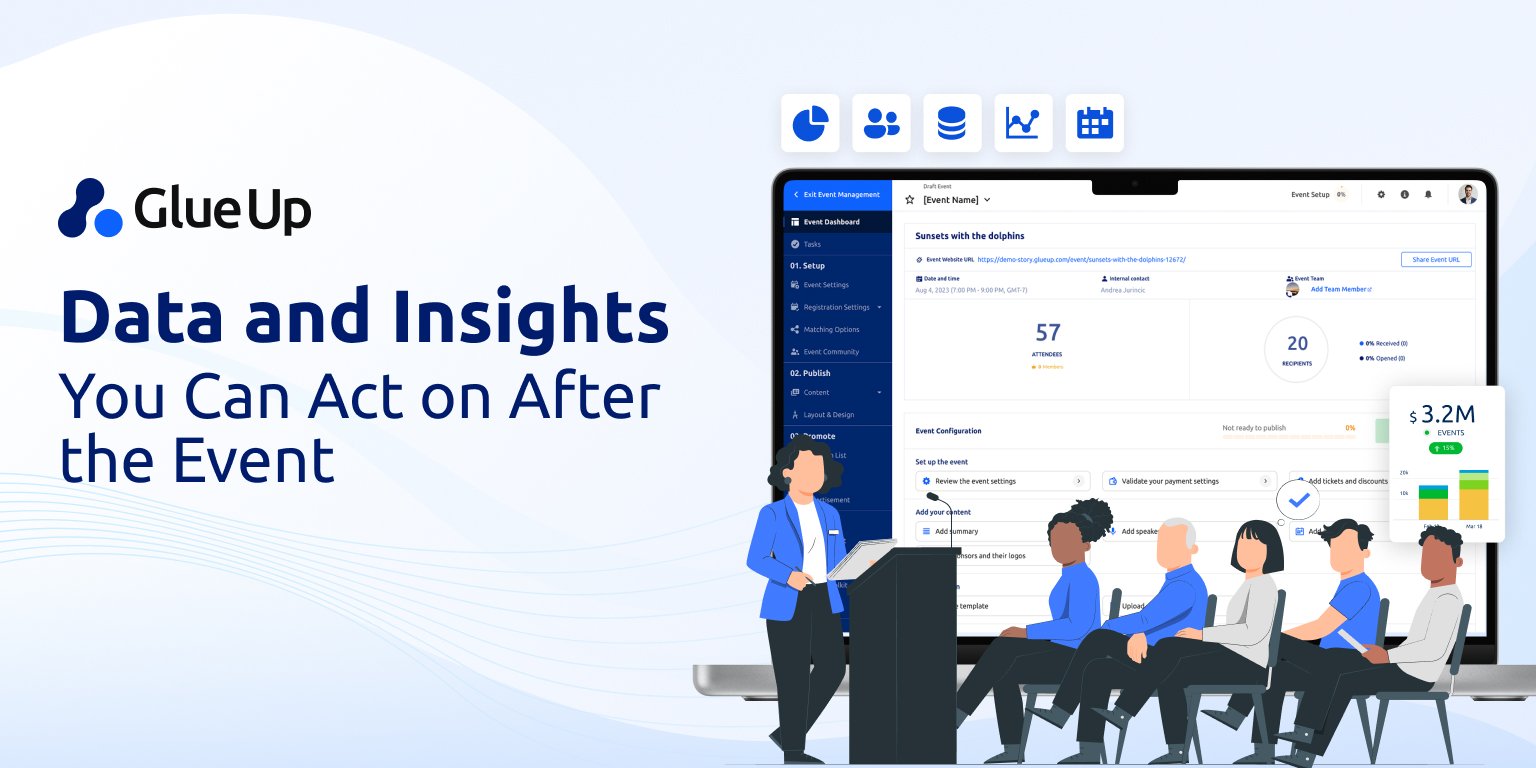
Event conference management software is reshaping what RSVPs mean.
There was a time when an RSVP was just a formality — a checkbox, a headcount, something to help you order the right number of chairs. But not anymore.
Today, RSVP is a conversion signal. It means someone didn’t just glance at your event — they decided to engage. And for associations, chambers, and member-based organizations, getting that yes is no longer about sending more invites. It’s about creating a registration experience that’s clear, timely, and valuable enough to inspire action.
That’s where the right event conference management software makes the difference. It goes beyond invitations and reminders. It shapes the way people experience your event — from the first click to the final follow-up. And when done right, it doesn’t just boost sign-ups. It deepens engagement, streamlines operations, and drives long-term member growth.
Let’s walk through how the right platform turns interest into action — and how your next RSVP can be the start of something bigger.
Why People Don’t RSVP (And What Software Can Fix)
A 2024 survey by EventMB found that 51% of invitees don’t RSVP because they either don’t understand the value of the event, or they find the registration process frustrating. Even if your event is strong, you’re losing sign-ups at the gate.
Here’s what’s holding them back:
Too much friction: Long forms, multiple steps, or redirects kill conversions.
Lack of clarity: If people don’t know what’s in it for them, they won’t commit.
Device mismatch: Over 60% of people browse invites on mobile, but most registration pages are still built for desktop.
Trust issues: If payment feels insecure or confirmation isn’t instant, people hesitate.
Timing problems: Invitations go out at the wrong time of day, or reminders arrive too late.
Good event conference management software solves each of these — not by flooding people with reminders, but by giving them exactly what they need, when they need it, in the format they expect.
What Event Conference Management Software Does (When Built for Real Engagement)
Most platforms promise to “manage” your event. Fewer actually help grow it.
The best ones — like Glue Up — are built to handle RSVPs as the start of a lifecycle, not a single action. Here’s how:
1. Branded, Dynamic Registration Pages
Personalized layouts for different attendee types (member, VIP, speaker, sponsor)
Auto-filled forms for returning users using CRM data
Real-time seat counters and waitlist triggers
2. Automated Outreach and Engagement
Pre-scheduled invites based on audience segments
SMS and email reminders triggered by inactivity or incomplete sign-ups
A/B testing built-in to optimize subject lines and call-to-actions
3. Secure, Mobile-First Checkout
One-click RSVP from email or QR codes
PCI-compliant payment processing
Calendar sync for Google, Outlook, and Apple
4. CRM Integration That Updates in Real Time
Tag new sign-ups automatically
Track which sessions they attended
Use behavior scoring to drive future engagement campaigns
5. Analytics and Operational Insight
See which emails led to the most RSVPs
Track drop-offs in registration flow
Analyze channel performance by ROI
In other words: good software closes the loop. It doesn’t just ask “Who’s coming?” — it shows why they came, how they got there, and what to do next.
Associations and Chambers Who Improved RSVPs with the Right Event Conference Management Software
Asia-Based Chamber of Commerce
Problem: 40% no-show rate for flagship annual summit
What changed: Switched to Glue Up, which used automated reminders, RSVP scoring, and waitlist conversion tools
Results:
No-shows dropped to 18%
Early RSVPs increased by 22%
Staff hours saved: 30+ per event
North American Trade Association
Problem: Manual RSVP tracking through spreadsheets
What changed: Moved to automated, CRM-integrated platform with approval workflows and real-time dashboards
Results:
RSVP confirmation errors dropped to near zero
Member engagement score improved 35%
Renewals rose the following quarter
Nonprofit Hybrid Summit
Problem: Attendees confused between in-person and virtual tickets
What changed: Unified event landing page with toggle for attendance type, dynamic content, and auto-segmented invites
Results:
60% of users used calendar sync
Event saw 40% more attendees vs. previous year
Sponsorship ROI improved through tracked engagement
Top Event Conference Management Software Features That Directly Drive RSVP Success
Let’s call out the features that have the clearest impact:
Feature | Why It Works |
Automated reminders | Nudges people who start to register but don’t finish |
Personalized emails | Increase open and click rates by up to 50% (Forbes, 2024) |
Mobile optimization | Over 58% of registrations happen on smartphones (Statista) |
Live counters / urgency indicators | Drives FOMO and faster decision-making |
Group RSVP support | Makes it easy for teams or departments to sign up together |
Pre-event agenda builders | Let people select sessions and lock in value ahead of time |
Secure payment with one-click checkout | Reduces drop-offs at final step |
Post-RSVP workflows | Trigger calendar invites, surveys, and follow-ups |
Each of these are nice to have. They’re part of a modern RSVP experience that puts your attendees first.
The Post-RSVP Plan: How to Keep Engagement High
Winning the RSVP is only step one. You’ve earned a yes. Now you have to earn attendance.
Event conference management software helps here too:
Pre-event nudges: “See who else is attending,” “Build your custom agenda,” or “Book your seat for the keynote.”
Session reminders: Push notifications 15 minutes before sessions.
Easy check-in: QR code or mobile tap, tracked in real time.
Feedback capture: Post-session surveys triggered automatically.
Conversion tracking: Which RSVPs led to renewals, upgrades, or future event sign-ups?
This isn’t just helpful for organizers. It makes attendees feel seen, valued, and taken care of — which makes them more likely to return.
Onboarding the Right Way: How to Adopt Event Conference Management Software Without Disrupting Your Team
Switching to new software isn’t just a tech decision — it’s an operational one. For many associations and chambers, the fear isn’t the tool itself, but the transition: Will it derail timelines? Overwhelm the team? Lead to errors when people are already stretched thin?
The answer: not if you implement it intentionally.
A 2023 survey by ASAE found that 68% of associations delayed technology adoption due to concerns about internal disruption. Yet, those who implemented software with a structured onboarding plan reported a 34% improvement in event efficiency within the first six months.
Here’s how to roll out event conference management software in a way that builds confidence — not confusion.
Step 1: Start With a Controlled Pilot Event
Instead of flipping the switch across your entire calendar, pick one flagship or mid-sized event to serve as your pilot. This lets you pressure-test the platform without risking major public-facing failures. Choose an event with:
Clear objectives (attendance, engagement, revenue)
A manageable number of registration types
Willing internal stakeholders who can give feedback
For example, a regional leadership summit or member of town hall can be a great test case before scaling to your annual conference.
Step 2: Build Role-Specific SOPs
Generic “how to use the software” training won’t cut it. Define responsibilities across teams — and document them.
Events team: Builds registration forms, manages RSVPs, tracks attendance
Marketing: Creates email campaigns, segments contact, analyzes engagement
Finance: Handles payment setup, refund policies, invoicing
Membership: Tracks sign-ups against CRM data, follows up on leads
These standard operating procedures (SOPs) should reflect real workflows. Think of them as living documents, refined after each event.
Step 3: Pull In Historical Data for Smarter Setup
Don’t start from scratch.
Use past attendee lists, ticket types, discount codes, and session feedback to train the system. If your platform integrates with your CRM (as Glue Up does), it is even better — you can auto-match attendees to member records, improving segmentation from day one.
Bonus: Segmenting returning vs. first-time attendees allows you to personalize messaging and improve conversion rates.
Step 4: Run Internal Simulation Flows
Don’t let the real event be the first test. Simulate an end-to-end journey:
RSVP via email invite
Select session add-ons
Complete payment or apply promo code
Trigger confirmation + calendar sync
Scan check-in QR at event
Submit post-event feedback
Doing this with your own staff not only exposes friction points but builds team confidence. Record the flow for future training or onboarding.
Step 5: Pre-schedule All Communications and Checkpoints
The number one cause of last-minute fire drills? Lack of schedule.
Use your event software to pre-schedule:
Save-the-dates
Registration opens/closes
Reminder series (7 days, 3 days, 1 day out)
Post-event surveys
Internal review meetings
Platforms like Glue Up allow you to set these once and replicate them across events — no rework every time.
Step 6: Evaluate Results with Meaningful Metrics
After the pilot event, look beyond attendance numbers. Evaluate:
RSVP-to-attendance ratio
Registration abandonment rate
Manual hours saved vs. prior events
Event revenue vs. projections
Team satisfaction with the process
Member satisfaction or feedback improvement
These metrics become internal proof points for broader adoption. They also help you refine processes for future events.
The Result: Less Chaos, More Confidence
Done right, onboarding doesn’t disrupt your organization — it sharpens it.
The goal isn’t just to adopt event conference management software. It’s to build institutional muscle memory: a set of repeatable workflows your team trusts and can scale.
Because software shouldn’t be another thing to manage. It should make you better at managing what matters.
What to Look for in the Best Event Conference Management Software
There are dozens of tools out there. Most of them claim to “manage” your event. But few are built for true RSVP growth.
Here’s what sets the best apart:
Built-in CRM and email workflows
Responsive, modern mobile UI
Real-time analytics with visual dashboards
Customizable registration flows
Secure payment gateways with tax/invoice features
Role-based access for large teams
Reliable support for launch days and crises
Modular features for hybrid, virtual, and in-person formats
Bonus if it comes with free mobile apps for attendees and organizers — Glue Up does.
KPIs to Track Once You’re up and Running
Go beyond total RSVPs. Track these metrics every event:
RSVP-to-show ratio
Form abandonment rate
Email campaign conversion rate
Early-bird vs. last-minute registrations
Device type used to register
Session-level attendance
Post-event feedback response rate
New member sign-ups after event
These metrics help you learn, adapt, and grow your events every time.
RSVPs Are a Strategic Asset
RSVPs tell you who’s listening. Who’s interested. Who’s ready to engage.
And when they’re captured, nurtured, and followed through with the right tools, they do more than fill seats — they build momentum.
If your event conference management software doesn’t help you do that, it’s not enough.
Want More RSVPs, Less Manual Work, and Better Event Performance?
Glue Up helps associations and chambers run better events with smarter automation, deeper insights, and cleaner workflows.
Built specifically for member-based organizations, Glue Up combines event management, email marketing, payments, communities, and CRMs into one clean platform — with mobile apps for everyone.
Book a demo today and get RSVPs that actually lead somewhere.



